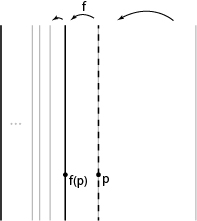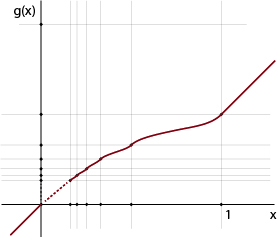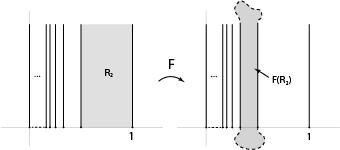This is in part a preparation for my 25-minutes talk in a workshop here at Princeton next week. (Never given a short talk before…I’m super nervous about this >.<) In this little survey post I wish to list some background and historical results which might appear in the talk.
Let me post the (tentative) abstract first:
——————————————————
Title: Volume preserving extensions and ergodicity of Anosov diffeomorphisms
Abstract: Given a self-diffeomorphism of a compact subset in
, from Whitney’s extension theorem we know exactly when does it
extend to
. How about volume preserving extensions?
It is a classical result that any volume preserving Anosov di ffeomorphism of regularity is ergodic. The question is open for
. In 1975 Rufus Bowen constructed an (non-volume-preserving) Anosov map on the 2-torus with an invariant positive measured Cantor set. Various attempts have been made to make the construction volume preserving.
By studying the above extension problem we conclude, in particular the Bowen-type mapping on positive measured Cantor sets can never be volume preservingly extended to the torus. This is joint work with Charles Pugh and Amie Wilkinson.
——————————————————
A diffeomorphism is said to be Anosov if there is a splitting of the tangent space
that’s invariant under
, vectors in
are uniformly expanding and vectors in
are uniformly contracting.
In his thesis, Anosov gave an argument that proves:
Theorem: (Anosov ’67) Any volume preserving Anosov diffeomorphism on compact manifolds with regularity or higher on is ergodic.
This result is later generalized to Anosov diffeo with regularity . i.e.
with an
-holder condition on the derivative.
It is a curious open question whether this is true for maps that’s strictly .
The methods for proving ergodicity for maps with higher regularity, which relies on the stable and unstable foliation being absolutely continuous, certainly does not carry through to the case:
In 1975, Rufus Bowen gave the first example of an Anosov map that’s only , with non-absolutely continuous stable and unstable foliations. In fact his example is a modification of the classical Smale’s horseshoe on the two-torus, non-volume-preserving but has an invariant Cantor set of positive Lebesgue measure.
A simple observation is that the Bowen map is in fact volume preserving on the Cantor set. Ever since then, it’s been of interest to extend Bowen’s example to the complement of the Cantor set in order to obtain an volume preserving Anosov diffeo that’s not ergodic.
In 1980, Robinson and Young extended the Bowen example to a Anosov diffeomorphism that preserves a measure that’s absolutely continuous with respect to the Lebesgue measure.
In a recent paper, Artur Avila showed:
Theorem: (Avila ’10) volume preserving diffeomorphisms are
dense in
volume preserving diffeomorphisms.
Together with other fact about Anosov diffeomorphisms, this implies the generic volume preserving diffeomorphism is ergodic. Making the question of whether such example exists even more curious.
In light of this problem, we study the much more elementary question:
Question: Given a compact set and a self-map
, when can the map
be extended to an area-preserving
diffeomorphism
?
Of course, a necessary condition for such extension to exist is that extends to a
diffeomorphism
(perhaps not volume preserving) and that
has determent
on
. Whitney’s extension theorem gives a necessary and sufficient criteria for this.
Hence the unknown part of our question is just:
Question: Given ,
s.t.
for all
. When is there a
with
?
There are trivial restrictions on i.e. if
separates
and
switches complementary components with different volume, then
can never have volume preserving extension.
A positive result along the line would be the following slight modification of Moser’s theorem:
Theorem: Any diffeomorphism on
can be extended to a
area-preserving diffeomorphism on the unit disc
.
For more details see this pervious post.
Applying methods of generating functions and Whitney’s extension theorem, as in this paper, in fact we can get rid of the loss of one derivative. i.e.
Theorem: (Bonatti, Crovisier, Wilkinson ’08) Any diffeo on the circle can be extended to a volume-preserving
diffeo on the disc.
With the above theorem, shall we expect the condition of switching complementary components of same volume to be also sufficient?
No. As seen in the pervious post, restricting to the case that only permute complementary components with the same volume is not enough. In the example,
does not separate the plane,
can be
extended, the extension preserves volume on
, and yet it’s impossible to find an extension preserving the volume on the complement of
.
The problem here is that there are ‘almost enclosed regions’ with different volume that are being switched. One might hope this is true at least for Cantor sets (such as in the Bowen case), however this is still not the case.
Theorem: For any positively measured product Cantor set , the Horseshoe map
does not extend to a Holder continuous map preserving area on the torus.
Hence in particular we get that no volume preserving extension of the Bowen map can be possible. (not even Holder continuous)



